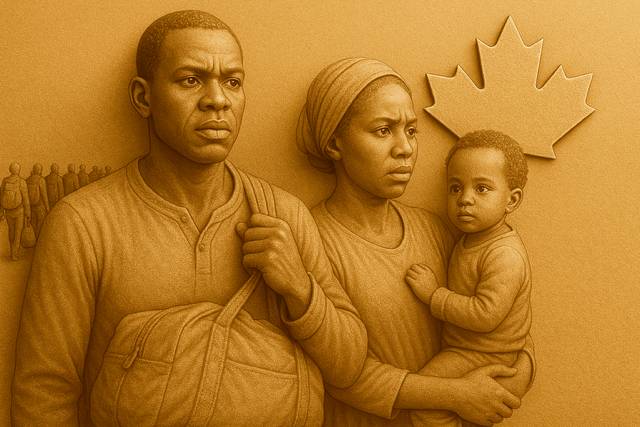African Canadians

Title: African Immigration and Communities in Canada
Source: The Canadian Encyclopedia Published: Various | Data includes 2016 census
Overview: Prior to 1960, Black Africans represented a small and scattered newcomer group in Canada. The 2016 census recorded 1,067,925 Canadians reporting African origin. These included:
-
230,110 from Central and West Africa
-
355,040 from North Africa
-
260,145 from Southern and East Africa
-
239,560 from other African regions
The term "African" encompasses a wide array of peoples including indigenous groups of West, East, and Southern Africa, as well as non-Black populations of European and Asian descent with multi-generational roots in Africa.
Immigration Patterns:
-
From 1946 to 1950, Africans made up only 0.3% of Canadian immigrants.
-
Policy changes, including the 1966 White Paper and the 1976 Immigration Act, increased African immigration modestly.
-
1972–73 saw Canada accept around 7,000 Ugandan Asians.
-
From 1975 to 1978, immigration averaged about 5.2% of Canada’s total immigration.
-
16,000 South Africans (mostly non-Black) immigrated from 1973–1983.
-
Limited immigration office locations and selective policies restricted Black African immigration.
-
By 1981, there were 45,215 Canadians of African origin; the number grew by 32% between 1996 and 2001.
-
Many Africans immigrated as refugees due to political instability in countries like Ethiopia, Somalia, and Rwanda.
Settlement and Integration:
-
Before 1970, Africans in Canada were mainly from Ethiopia, Kenya, South Africa, Zimbabwe, and Zambia.
-
Africans settled in Ontario, Quebec, Alberta, and British Columbia.
-
French-speaking Africans concentrated in Quebec, especially refugees from Rwanda and Burundi.
-
Language, cultural shifts, underemployment, and lack of qualification recognition posed significant challenges.
-
Cultural adaptation was difficult due to differences in social norms and family dynamics.
Communities and Support:
-
The Canadian African Newcomer Aid Centre (founded 1984) helped with integration.
-
Immigrants faced culture shock and often underemployment despite high education levels.
-
African organizations have provided networking, cultural, and emotional support.
Other Groups from Africa:
-
Ugandan Asians: ~7,000 resettled in 1972; most were Ismailis with strong socio-economic networks.
-
Gujarati Hindus: Conservative, vegetarian, and successful in business.
-
Goan Indians: Roman Catholic, Portuguese-influenced; settled mostly in Toronto.
-
Portuguese from Angola & Mozambique: ~2,100 resettled in 1976–77.
-
South Africans & Zimbabweans: Largest group from sub-Saharan Africa; included British, Jewish, Afrikaner, and Indian communities.
Arts and Culture:
-
African Canadian artists have created a distinct cultural identity.
-
Toronto hosts Afrofest and other cultural events.
-
Organizations such as CAN:BAIA and CELAFI promote African arts.
-
Artists like David Kibuuka, Macaulay Eteli, and Len Gibson bring African themes into Canadian culture.
Conclusion: African immigration to Canada has been shaped by shifting policies, political upheaval in Africa, and community resilience. Africans in Canada continue to face integration challenges but contribute significantly to Canada's multicultural mosaic through culture, arts, and entrepreneurship.